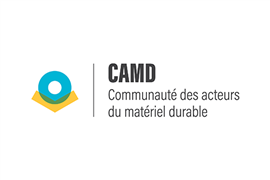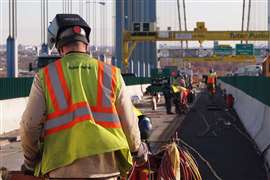Trans-Atlantic bridge announced
30 March 2009
US president Barack Obama and UK prime minister Gordon Brown have unveiled plans for a fixed link between the US and UK. Part of an international stimulus plan, the 5600 km Trans-Atlantic road/rail bridge is expected to cost US$ 1.5 trillion. Completion is due in 2040.
Project website
A special website for the project went live on the morning of April 1. Click here for more details.
The treaty enabling the new link was signed on the morning of 1 April at the G20 summit in London, UK. Commenting on the agreement, Prime Minister Brown said, "The Trans-Atlantic bridge is a symbol of Britain's prudent fiscal management. It underlines this Government's ability to make sound and well thought-out investments for the future, ensuring the country's economic strength for decades into the future."President Obama added, "On this day, I stand here humbled as the 44th president of the United States, proud and resolute in the face of unprecedented economic turbulence. This bridge will stand for generations to come as a symbol of our two nations' unity and commitment to the fight for the infrastructure that is the very life-blood of our two great countries' propserity."
When complete, the bridge is expected to allow citizens to drive between the US and UK for the first time, with a journey time of about 60 hours. The high-speed train is expected to be quicker, with average speeds of 150 km/h taking the travel time down to 38 hours. It is currently possible to fly between London and New York in about 7 hours.
Challenges
Constructing the 11201 bridge pylons will present a formidable challenge, particularly in the mid-Atlantic region, where the ocean is up to 5.5 km deep. Rather than opt for a floating design, Government engineers are thought to favour cast in-situ concrete pylons anchored to the seabed, built using the latest in submerged self-climbing formwork. Initial projections are for pylons to be cast in a series of 5 m pours, with the deepest structure taking about 21 years to reach sea level.
iC has also learned that several crane manufacturers are adapting exisiting models for under water use ahead of the project.
There is also thought to be heated debate between the two countries about which side of the road cars will drive on. One solution is for them to drive on the left for the London to Reykjavik stretch. A changeover station outside the Icelandic capital would then allow them to switch to the right for US side of the journey.
However, it is believed that driving on the left or right can only be legally enforced within the US or UK's territorial waters. Once outside these 12 nautical mile (22 km) limits there is no clear legal jurisdiction, and motorists may be free to drive on whichever side of the road they want.
A break-away group of US Senators is also thought to be planning an amendment that would only allow American cars to drive on the US portion of the bridge. Meanwhile, a UK environmental pressure group has demanded that the bridge be built from 100% renewable materials, with sustainable pine forests providing wood for the all-timber pylons, and the road being surfaced with a compound derived from recycled plastic carrier bags.
A source close to the project said, "There are obviously a few minor technical issues to resolve, but we are confident this project will go ahead with the usual degree of success you would expect from large-scale central government procurement."







